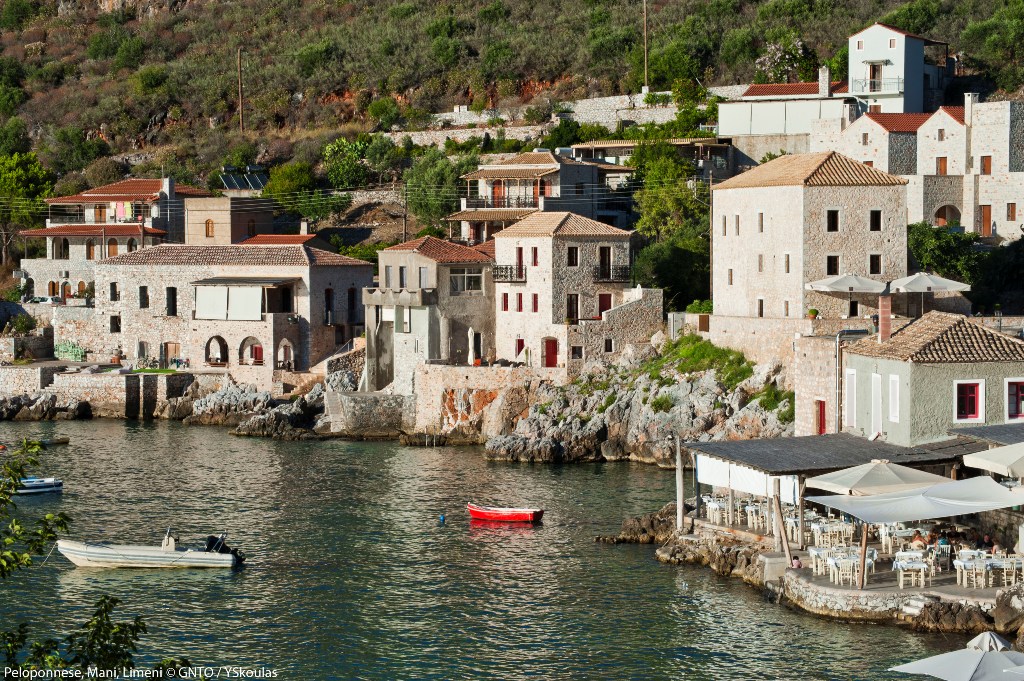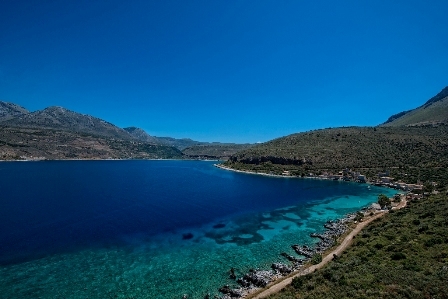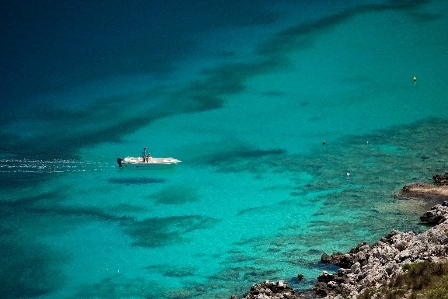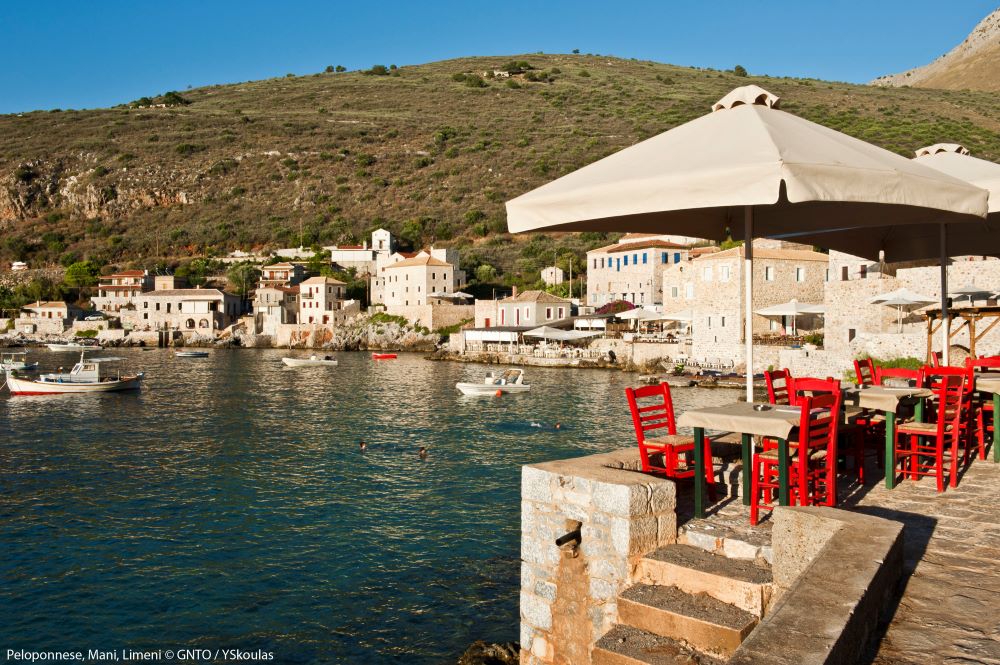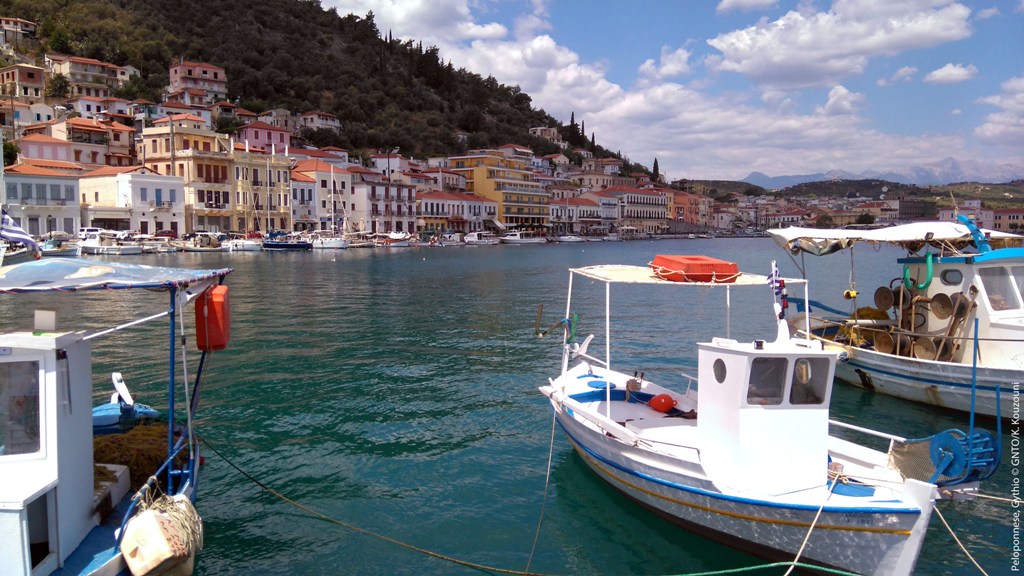The Mani
You are here: Home > Destinations > Greece > Peloponnese > The Mani
About The Mani
The wild, mountainous landscape of the Mani has shaped the region's history as these mountains provided a refuge from several thousand years of invasions.
The Mani is an unforgiving barren land of rocks and stones, walls and prickly pears, bare hillsides, bays and coves torn by the sea and the wind. Small coastal hamlets contrast with less accessible mountain villages. Gorgeous views are around every corner, little wonder then that many visitors include this area on a Peloponnese fly drive holiday.
The Mani people are charming and hospitable. In bygone days however Mani witnessed many blood feuds. An intricate feudal society combined with many families trying to eke a living out of very poor agricultural land meant that there were frequent clashes between families. Strongholds or towers were built for protection. Families would hide inside their tower in an attempt to escape the wrath of their enemies. Frequently these feuds (between the male family members only) would last for years.
Today ruins of many of these tower houses are dotted around the hillsides - some have been bought and turned into private holiday homes; others into small hotels.
It's worth spending a day driving around the Mani peninsula to enjoy its fabulous and diverse scenery: picturesque fishing villages, quiet pebbly beaches, small Byzantine churches, pine-clad mountains, valleys and sleepy hilltop villages.
Asphalted roads are a relatively recent introduction to Mani. In the 1960s the main way of moving goods was by pack animal using the 'kalderimi', a system of cobbled tracks connecting the villages.
Gythion in the north-east Mani is one of the main ports - it resembles an island port with its neo-classical houses and fish tavernas surrounded by lush green hills.
Areopolis (the city of Ares- god of war) lies on the west side. It's a traditional town with churches and monasteries to explore as well as its famous towers, which are protected monuments. Many of these have been reincarnated as museums or upmarket hotels.
Limeni is Areopolis' traditional port and a lovely little village, another great base for exploring the Mani. Its picturesque bay is characterized by a harbour with bobbing fishing boats, a charming row of houses and a very pretty castle. It's also on the doorstep of the Diros Caves, one of the earliest inhabited places in Greece. Here you can travel by boat through the caverns admiring the fantastic stalagmites and stalactites.
Kardamili is a quaint village by the sea in the outer Mani region of the Peloponnese. The sea here is clear and clean and there are a few lovely pebbly beaches in the area backed by olive groves.
On a gentle slope behind the main street is Old Kardamili, where you'll find abandoned tower houses clustered around the 18th church of Agios Spyridon which saw action during the War of Independence.
Tayetos Mountain, named after an ancient Greek nymph, is just a short drive from Kardamili and is definitely worth a visit. Rindomo and Viros Gorge offer hiking opportunites.
A little further away, in the greater Mani area, are Cape Tenaro, the southern-most point of mainland Europe, and the fortified town of Mystras, a UNESCO world heritage site situated on a steep cliff of Tayetos.
Hotels to visit
Where to stay
Flexible Tailor-Made Holidays
- We believe passionately that no two holidays should be the same.
- With our flexible tailor-made holiday options you can travel at your own pace.
- Rediscover a city, a resort or an island in a weekend or longer.
- Take a small group tour or embark upon a more adventurous trip.
Trusted Service
- ATOL cover for flight inclusive holidays.
- One of us at Rediscover the World is very likely to have visited the hotels and travelled along the routes on your itinerary.
- Dynamic, comprehensive travel app with all your documents, maps and much more.
- Full financial protection for your holiday (TTA).
Why book Greece with us ?
- More than 30 years experience in Greece
- Unrivalled expertise of our local partners
- Fly-drives & Island hopping holidays
- Hiking in Crete, Pelion & Zagori
- Professionally guided sightseeing tours
- Personally chosen hotels, apartments & villas
- 24hr assistance whilst in Greece



